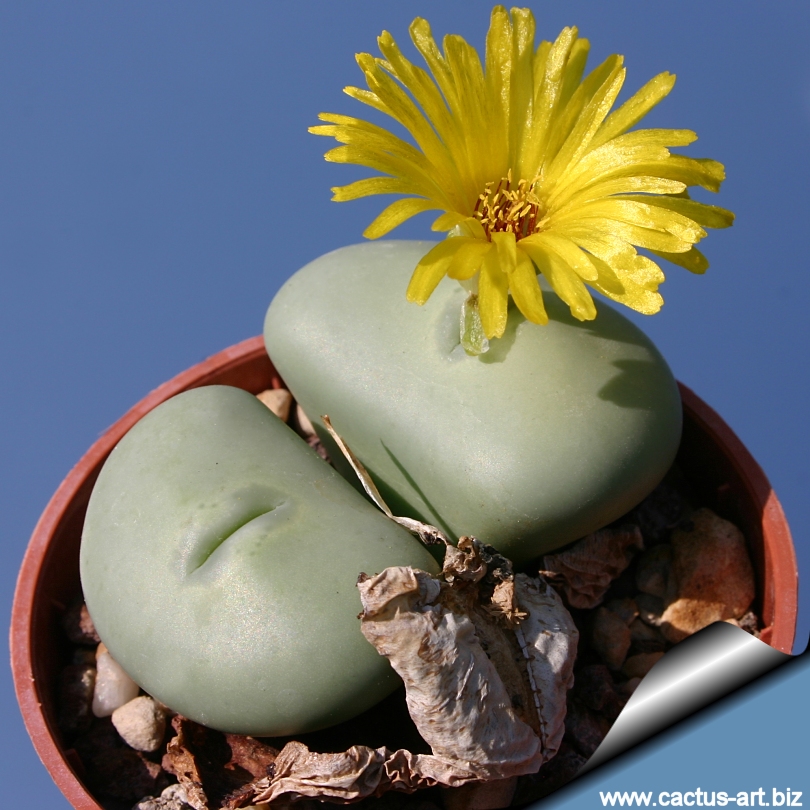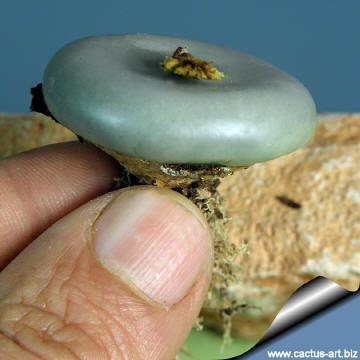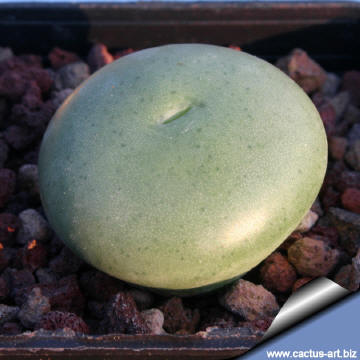|
|
|

The plants of Conophytum ornatum are large and flat and blooms in
autumn.
|
 |
 |
|
Advertising
|
|
|
|
|
|
|
Family: Mesebrianthemaceae (Aizoaceae)
Scientific name: Conophytum
ornatum Lavis
Type specimens: Repository The Bolus Herbarium (BOL) Collector
Herre, H., No SUG 928, Locality Little Namaqualand, Steinkopf, Umdans.
South Africa
Origin: Little
Namaqualand, South Africa
Habitat: Grows
almost hidden in the soil on quartzite ridges
in cracks, often mixed with
Crassula elegans.
Synonyms:
-
Conophytum flavum N.E.Br.
Type specimens: Repository The Bolus Herbarium, Botany
Department, University of Cape Town, South Africa, BOL13097
-
Conophytum flavum
ornatum
|
|
Description: Is a tiny bluish green
succulent plant with
golden yellow flowers, these plants are variably caespitose, with single
or double bodies, or forming dense mats or cushions
Body ( leaves): Large, flat, up to 2.5 cm in diameter truncate or
concave at top, light grey-green, bluish-green or whitish-green with
many green spots, with a small growing cleft that doesn't reach
right across the body.
Flowers: Large,
daisy-like, yellow. The thin petals form an almost star-like,
spidery structure, they are very showy: Blooming season:
The flowers open in the morning in
bright sunshine, closing at the latter part of the afternoon. Blooms
mostly August trough November.
|
|
|
|
Cultivation: C. ornatum is easy
to grow. These plants grow on winter rain and head for summer dormancy.
More or less dormant in summer. The plant requires little water;
otherwise its epidermis breaks (resulting in unsightly scars). Water
throughout the year although minimally in summer, (only when the plant
starts shrivelling), but it will generally grow even in summer if given
water. Water regularly in winter after the previous year's leaves have
dried up. Requires good drainage. Keep cool and shaded from hot sun in
mid-summer; it needs full sun or light shade in the other seasons. Hardy
to -2°C. Ensure a very good ventilation. Avoid to repot frequently. This
plant may stay in the same pot for many years. Plants grown in larger
containers have frequently relatively poor flowers. It might improve
when the plants are given their own, small individual pots.
Propagation: It can be
reproduced both by cuttings and seeds. Take the cutting from a grown-up
mother plant. Each
cutting must contain one or more heads, along with
a fraction of root.
Photo of conspecific taxa, varieties, forms and
cultivars of Conophytum flavum:

 |
|